So should you still try to get media coverage this way? Absolutely! There are tons of links up for grabs. Not just any links. Super high authority links that can drive traffic, leads, and sales.
But how do you get ahead of the competition? As someone who has had great success using earned media platforms like HARO as a means of building top-notch links over the years, I’m going to give you my tips and tricks on how to get killer backlinks using HARO and alternatives.
But first, let’s get familiar with everything HARO can actually do for you.
Help a Reporter Out, or HARO from Cision, is the best-known platform for journalists’ requests. You receive daily emails filled with opportunities across topics like marketing, lifestyle, business, etc.
But how does it work? First, you should sign up as a source.

After you sign up, you’ll get three emails a day—at 5:35 a.m., 12:35 p.m., and 5:35 p.m. ET from Monday to Friday.
The emails will be broken down into different categories. Here’s an example of an email you’ll receive:

Each request will have a title and an outlet in brackets. You’ll want to browse through the email and find relevant topics that you can contribute to.
Once you’ve given the service a spin, it’s definitely worth considering upgrading to a paid HARO account. There are many additional features that become available, which can give you a competitive edge when pitching.
Here’s a quick rundown on HARO Premium.
There are four subscription levels available (including the free option):

For most purposes, the Standard account at $19 a month will be more than sufficient.
The first advantage of a paid subscription is you can set up a profile/bio that will be automatically inserted into your pitches.
The bio includes links to web properties and social media. These all help to build credibility and authority when pitching to journalists.
You can also add details on your specific areas of expertise and any publications you have previously been featured in.
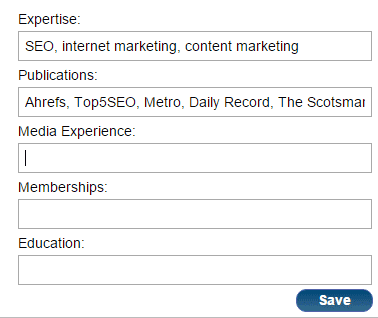
As with the free account, you can subscribe to opportunities in specific verticals. But with a paid subscription, you can also set up alerts for media requests that match specified keywords. You can even get SMS alerts if you are in the U.S.
In the example below, I have subscribed to the “Master Haro,” “Business and Finance,” and “High Tech” emails. I have also set up an alert for the keyword “SEO.”
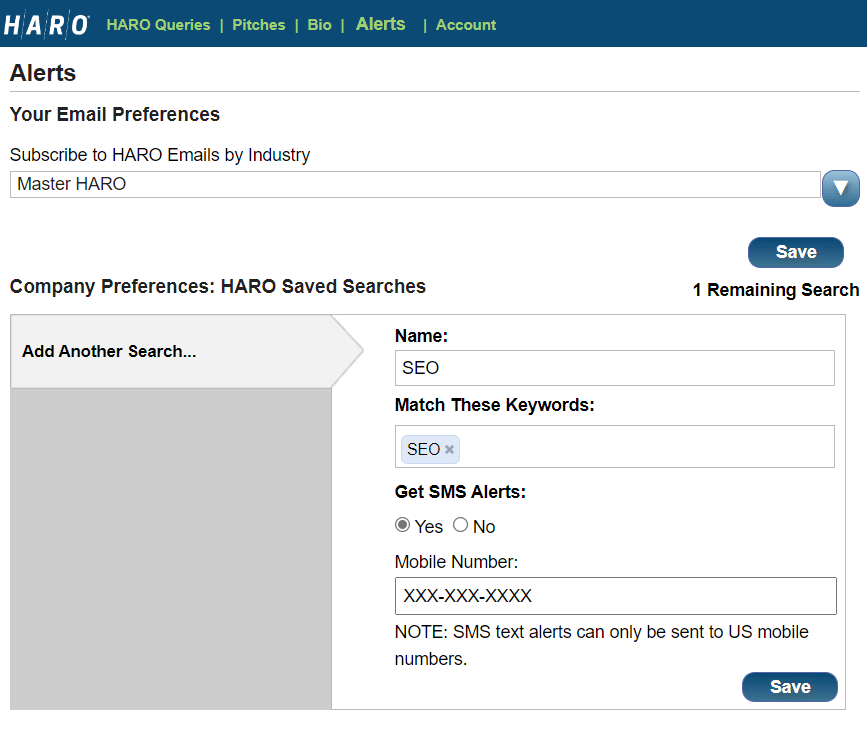
From now on, I’ll get an email alert like this whenever new media requests include the keyword “SEO”:

Another nice feature is the ability to browse and respond to queries directly through the online interface.
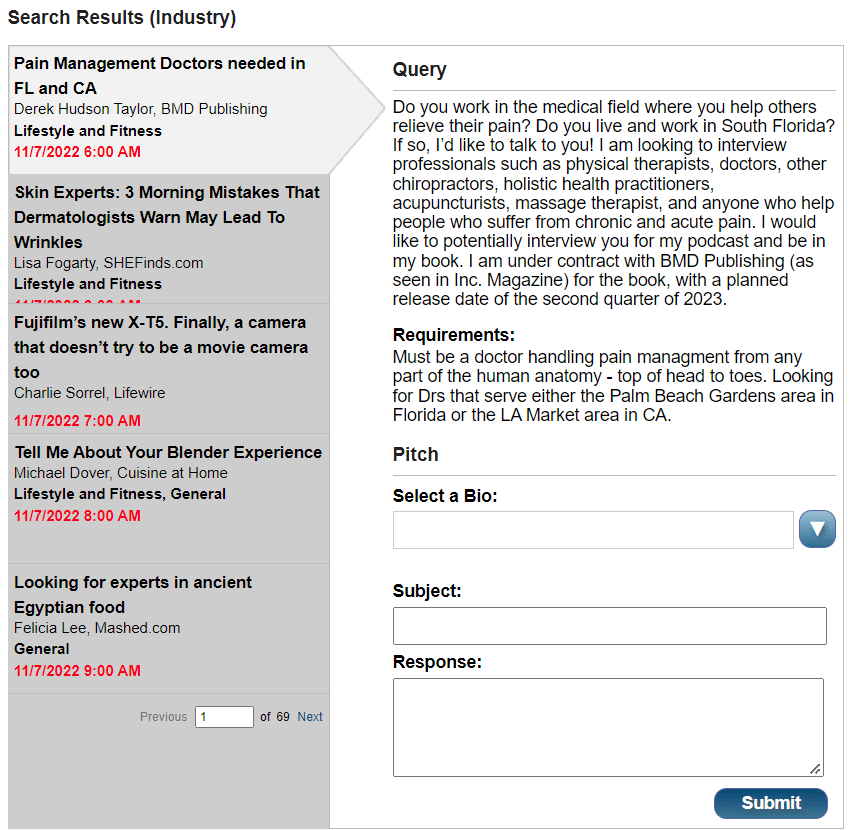
You can even search queries by keyword.

As you can see, the paid HARO accounts offer a nice bunch of extra features to help you secure media mentions.
When it comes to using digital PR, and in particular earned media techniques, there are a few things you need to take into consideration to be truly successful at building high-quality links:
- Take your time
- React quickly
- Choose wisely
- Focus on the right things
- Craft quality pitches
- Use the right platforms
Let’s take a look at these more closely.
Take your time
Here’s the thing about reactive PR: It’s a long game. Although you can gain incredible backlinks from super high authority websites like Forbes, The New York Times, WebMD, etc., this process isn’t instantaneous.
You have to remember that, with the nature of reactive PR, journalists are posting queries often before writing their content. So they need to filter through all of the responses to find a relevant one, get an article written and edited, as well as get it published.
All before you can get the glory of that one mega link.
Depending on how far in advance they prepare their content calendar, it can easily take six to eight weeks to see these queries published. That’s why when working with clients, I always tell them to expect to wait a minimum of six weeks to start seeing a steady flow of links.
But it is really important to be working away continuously in the background so that once you do start seeing movement, you’ve already built up a steady pipeline to maintain continued high-quality link acquisition.
React quickly
Journalists can get even thousands of responses to each query they post. Platforms like HARO are incredibly saturated with agencies and freelancers offering HARO link building services, and they are all trying to land killer links.
For two reasons, being as quick as possible when responding to queries improves your chances of being successful.
First, you stand a better chance of being seen by a journalist.
As journalists get so many queries, they will often stop reading new responses if they have already found what they are looking for. So even if you craft an amazing pitch, it may not be opened if someone else has beaten you to the punch.
Secondly, because of the high volume of responses journalists get, many are setting same-day deadlines for queries to avoid being bombarded with irrelevant pitches.
Recently, more and more queries are coming through with an end-of-day PST deadline. If you skip a day or don’t check for new queries until late afternoon, you could miss out on the chance to be featured on your dream site.
That being said, it can be difficult to reply to journalists quickly if you are relying on others (like clients or co-workers) to give expert commentary. Here are some things you can do to help you respond to your most relevant queries as quickly as possible:
- Gather soundbites from your experts – Keep copies of all of the commentary you have previously sent on behalf of your clients. If a similar query comes up, you can send a quality response without needing to go back to your clients.
- Use your client’s website for info – Similar to the point above, when working with a client, I’m always sure to gather some great speaking points from the content already available on their “about” page and blog that I can paraphrase as a quick response.
- Set up filters and alerts – By using email filters and alerts, you can ensure you are being notified quickly about only the most relevant queries. That way, you don’t need to waste time reading every query in every email.
- Use a paid HARO account – Again, this is similar to setting up an email filter. But a paid HARO account allows you to select the types of queries you want to be notified about. So you’ll only receive emails with queries that are relevant to you. Higher-tier plans even allow you to get the queries a bit sooner.
Choose relevant queries
First, make sure you meet the journalist’s requirements and are qualified to answer a specific query before wasting your (and the journalist’s) time.
One mistake I see time and time again is people focusing on certain metrics rather than the queries they are most qualified to answer. In doing so, they hinder their chances of success.
Here’s one I’ve heard a million times before: “I only want dofollow links above DR 60 on a site in my niche.”
Here’s the thing: If you aren’t getting results that contribute toward your marketing objectives, these are simply vanity metrics.
With any earned media coverage, you should strive to achieve at least one of the following:
- Get exposure to the target audience
- Gain valuable link equity to help your content rank better in organic search
- Convert referral traffic
That’s why it is important to establish a clear strategy with reactive PR. Using competitor analysis and truly understanding your target audience can allow you to focus your efforts on acquiring links that most offer value and increase the return on investment (ROI).
Filter domains worth pursuing
It is important to ensure any queries you respond to are for sites you actually want to be published on. You should check that the site aligns with your personal and professional viewpoints and is of high quality.
Use Ahrefs’ Site Explorer to check out the website’s traffic and backlinks.
By simply plugging the potential site from the HARO query in Site Explorer, you can bring up a quick overview of the site’s metrics, including the Domain Rating (DR) and traffic.
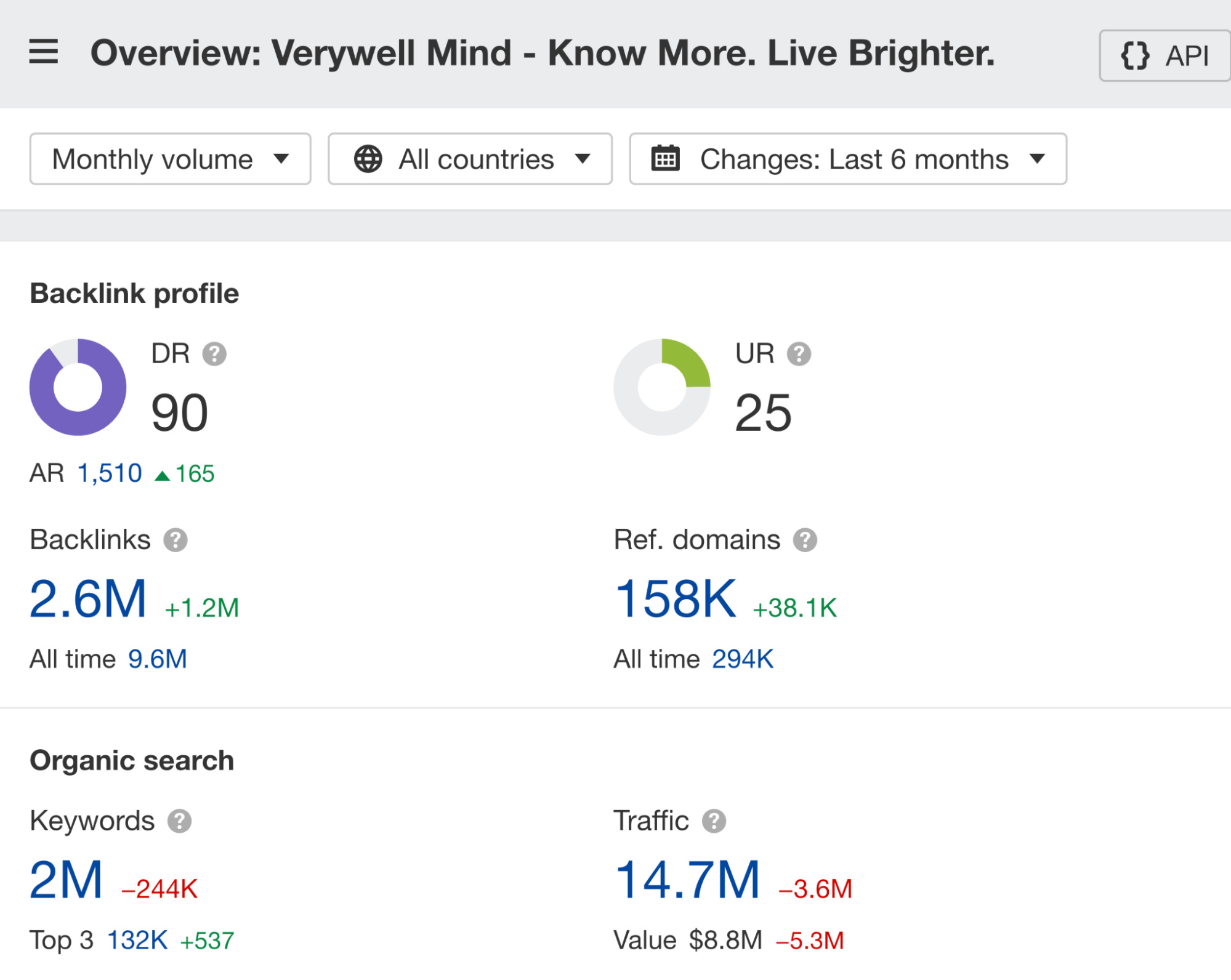
So for this example, the metrics look great, with high authority and a huge amount of organic traffic. But we also want to take a look at the site’s backlink profile. Avoid anything that looks like it’s full of spam links. You can check this in the Backlinks report in Site Explorer:
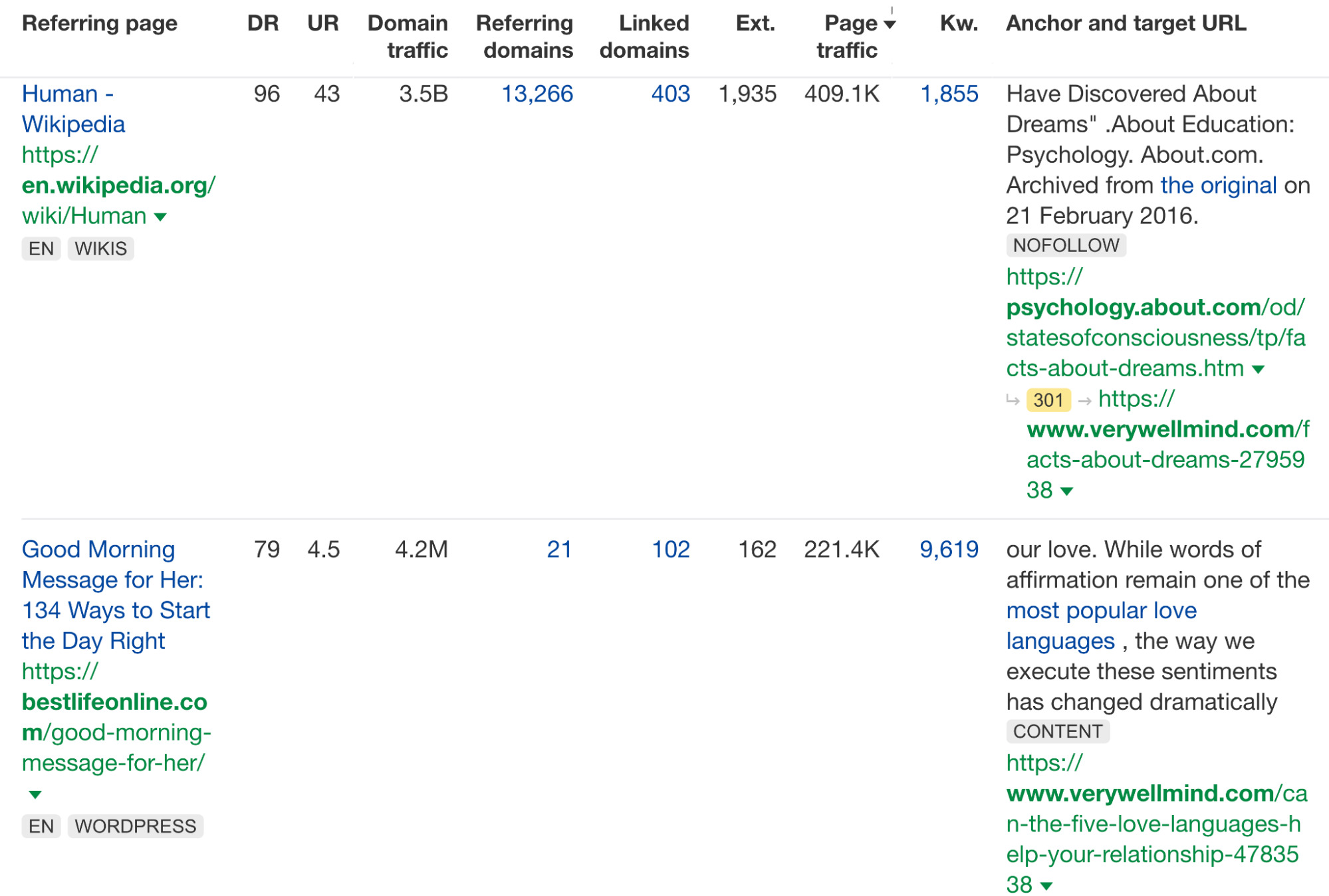
Lastly, head over to the site and check out some of the most recent posts. Make sure the content is high quality and offers value to the reader.
The more you work with HARO, the more you realize there are a number of sites that essentially create an entire piece of content solely by collecting HARO responses. They are full of external links to sites (diluting that all-important link equity) and have questionable quality.
There is no point in getting links on a site in your niche solely because it is above a certain DR. Instead, aim to receive a link on a site that has huge visibility, has value to your target audience, and drives relevant traffic and qualified leads to your website with quality content.
Craft quality pitches
When it comes to HARO link building, it’s all about being pitch-perfect. Writing pitches that journalists want to include in their content is the key to success.
Here are some tried and tested proven techniques for writing pitches that convert into published links.
Work with multiple personas
My personal top tip when using HARO is to work with multiple personas.
Many people make the mistake of only pitching journalists on behalf of the CEO or founder of a company. But most companies have experts across multiple departments, such as the HR manager, chief marketing officer, head of content, and so on.
This not only gives you the opportunity to go after more queries, but it also gives a face and a voice to integral team members, building trust with potential customers.
Add value
Pitches must be unique. Ask yourself if each sentence is required and if it adds value for the journalist.
Be mindful of what is already ranked on the search engine results pages (SERPs) for the topic and consider how you may add value that goes beyond what is already out there. Think outside of the box and try to offer something different while still showcasing your expertise.
Showcase your personality
Every pitch is dependent on you, the subject matter expert. Your quotes should inform and entertain the journalist. When sharing your knowledge, use analogies and your personal viewpoints.
To connect with the journalist and their audience, write in a direct and casual style almost as if you were speaking to a friend. Be sure to also deliver your expertise in a non-patronizing way.
Keep it short
Journalists receive literally thousands of pitches for each inquiry. They definitely don’t want to read “War and Peace.”
Unless there is an occasion where you need to give exceedingly technical details, your pitch should generally be between 200 and 300 words.
Make sure your pitch covers what the journalist requested in the inquiry and addresses the topical subject.
Take time to include the essentials
Reading a journalist’s inquiry fully and taking the time to include some key essentials will make the difference when it comes to success. Here are my top things to consider:
- Subject lines: Remember, journalists will skim their inboxes for the most relevant queries. Always include the title of the query, the person pitching, their role and company, and their experience. Example: “RE: How to screw in a light bulb - John Doe - Engineer at Phillips - 15 years of experience screwing in light bulbs.”
- Personalize your pitch: Always include the journalist’s name where possible. More often than not, you can establish an ongoing relationship with them and become a go-to source outside of HARO. So taking the time to personalize your pitch makes a difference.
- Intros and outros: Always include a short introduction that explains who you are and why you’re an expert on the topic you are pitching. Also, be sure to sign off by letting the journalist know you’re happy to answer any additional questions should they need to follow up. And add that you’ll be happy to share their article on social media when it goes live.
Pitch-perfect template
Here is my template for the perfect pitch:
Hey [JOURNALIST NAME],
[INTRO PARAGRAPH]
[PITCH]
[SIGN OFF]
As the pitch is the focus, it is important to ensure you answer different types of queries with different pitch styles. Let’s look at some examples of the different types of queries and publish-perfect pitches.
Advice queries
Query: How to respond when a date cancels on you
Pitch: The best response is to remain calm and relaxed and say something like “Thanks for letting me know” and leave it there. I wouldn’t at this point suggest another date for several reasons. They’ve canceled on you, so I’d leave the ball in their court to suggest another date. If you’re the one trying to rearrange, you run the risk of coming across as desperate and needy.
Business queries
Query: Challenges faced in building your business
Pitch: The top challenges I faced were fund management and hiring suitable people. The first staff I hired only stayed for about three weeks, as they found the job repetitive or realized it was just not for them. Finding people who live and breathe your mission is challenging. It took time to filter candidates to avoid the same thing happening again.
Product selection queries
Query: Choosing a gaming PC
Pitch: As an avid streamer on Twitch and a lover of gaming since I was a kid, here are my thoughts: PC gaming is in a class of its own. If you’re going to invest in a new gaming computer, here are some important things to consider before you start your search.
Budget: You have got to start with your budget, of course! You may be surprised to find that a custom-built gaming computer may not be out of your reach, so keep that in mind!
Graphics card: High-end graphics cards are rare, so it’s probably best to purchase a mid-range card and adjust your game settings accordingly.
RAM: When it comes to memory, it isn’t too expensive right now. So I’d suggest you go for at least 8 GB.
Storage and audio coms: Other things to consider are storage and audio coms. If you plan on playing online multiplayer games, you will also need a quality headset with a microphone.
Product recommendation queries
Query: Best travel duffel
Pitch: The Patagonia Black Hole Duffel is made for any type of trip. I’ve put mine through the paces, taking it on surf trips to Central America, having it during ski trips in the Rockies, and even using it as a giant cooler by packing it full of ice. It has never ripped, torn, or complained about how much stuff I’ve jammed inside it.
Another cool feature: This bag folds up into its front pocket for easy storage when not in use.
Use the right platforms
As mentioned previously, HARO has become incredibly saturated over the last few years. This means there is significantly more competition, and it takes a lot more time and dedication to land solid links.
Even those of us who have been doing HARO link building for a long time are lucky to get a success rate of around one link for every six pitches these days. For those with less experience, that’s going to look more like one link for every 10 or 12 pitches.
That means if you’re hoping to get 10 links per month, you’re probably going to need to send at least 100 pitches to see success.
But here’s the issue with that. As this technique is reactive, that means we can only respond to what journalists post. It’s not like guest posting, where we can find sites we want and pitch them our ideas for a new article.
Getting 100+ relevant queries on one platform is difficult, so the best option is to use multiple outlets. Because newer platforms have less competition, often meaning you can get success from fewer pitches. Also, because there are more available queries.
I’m going to talk you through my tried and tested favorite HARO alternatives, the pros and cons of each one, as well as my top tips for success. We’re going to look at Terkel, Help a B2B Writer, and PressPlugs.
Free and paid
Terkel is aptly named after Louis “Studs” Terkel, a writer and broadcaster who spent his career striving to give a voice to everyday people. It has a mission to offer a platform for small businesses to have their expertise shared across the biggest global outlets.
Terkel is an all-in-one platform that offers high-quality queries from some of the biggest platforms worldwide.
How does Terkel work?
First, you will need to head over to Terkel and sign up for a free account. This will allow you to answer three queries per month with basic information about the websites you’re pitching.
You will need to set up a profile that includes a high-quality headshot and your social links, as these will be a contributing factor as to whether your answers get used by journalists.
You can also select the different types of queries you want to respond to, such as marketing, business, lifestyle, etc.
Once set up, you will find everything you need within the Terkel platform. There’s no messing around with emails here; the current open queries are all listed under the “Questions” tab.

You can also answer queries directly on the platform itself.
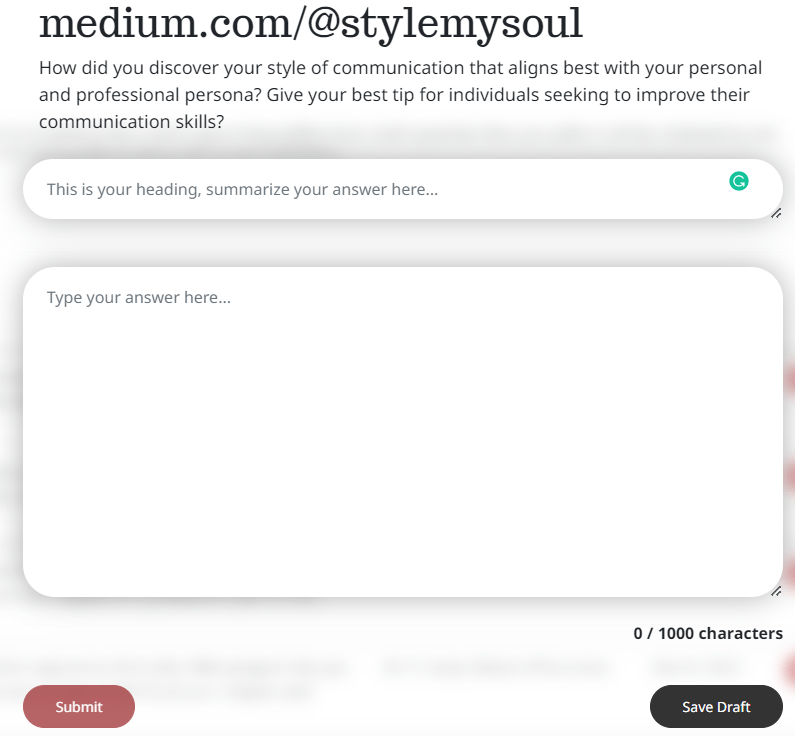
Terkel has its own algorithm that calculates a source’s expertise based on the number of pitches they send and how many of those are successful. With that, each user is assigned an “expertise score,” which can help Terkel match sources with relevant queries.
That way, it only needs to send emails to let you know about the most relevant queries as and when they appear rather than on a set schedule. That’s why with Terkel, it is really important to only answer relevant queries. If you don’t, it can hinder your expertise score.
As an SEO geek, I also love that Terkel uses Bing’s API to pull in suggested keywords and displays these while you’re pitching, helping you meet search intent.
Terkel offers free and paid options. With the free version, you can send up to three pitches a month from a basic selection.
With the paid option (which is very affordable), you get unlimited pitches, exclusive opportunities, as well as additional information about the sites (which you can filter), such as DR and the type of link attribute.
Pros
One of my personal favorite features of Terkel is the “Track your answers” system.
Basically, the team at Terkel preapproves every query before sending the most relevant from the best experts to the journalists. This is a huge benefit for publishers (as they aren’t being bombarded with irrelevant pitches), and it also offers instant feedback.
Especially when you compare your pitches, which have been selected by the Terkel team, against those that have been used by journalists. You can use these comparisons to see where your pitches have fallen short and adjust your strategy moving forward.
Cons
The only thing that currently lets Terkel down for me is the fact that it is still a new platform, meaning there are fewer publishers on it than on others.
This is not a huge problem for a small business wanting to get the word out about itself. But for a full-time PR freelancer or an agency, it means you usually need to use Terkel in conjunction with something else to meet the number of links you need.
However, this likely won’t be an issue for long as more publishers sign up with Terkel by the day.
Tips for success
What better way to get a top tip than to find out from Terkel directly? I spoke with Brett Farmiloe, founder of Terkel, who gave this advice:
Quality comes first. We define quality using the “E-A-T” acronym. To be successful on Terkel, make sure you’re answering questions that speak to your expertise. Use your real identity so that publishers can trust your insights. And focus on being the authority of a specific area.
Free
Help a B2B Writer is a new platform that works in a similar way to HARO, sending daily emails with available opportunities across a number of different niches.
With Help a B2B Writer, the queries are often from super high authority, well-known B2B SaaS brands based in the U.S., such as Zapier. This is great for anyone working with small and medium B2B businesses.
How does Help a B2B Writer work?
You’ll need to start by registering as a source and selecting the types of queries you are interested in, such as social media marketing, SEO, etc.
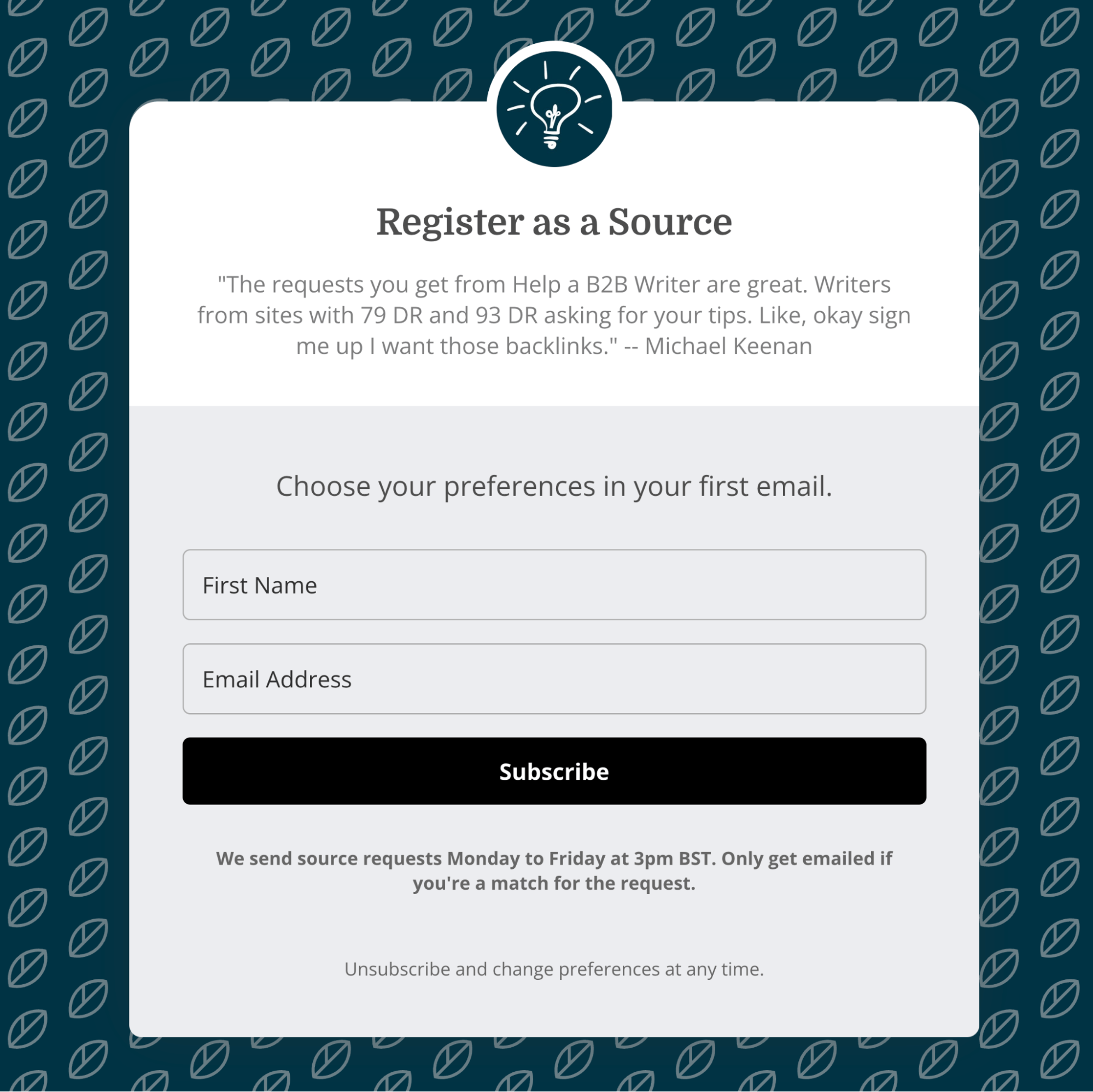
From Monday to Friday at 3 p.m. BST, Help a B2B Writer emails sources with journo requests that look like this:
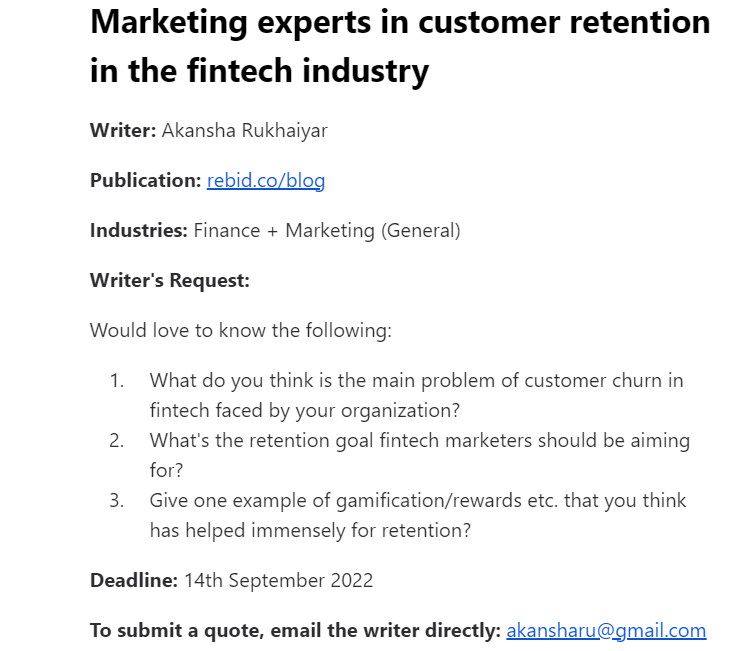
Help a B2B Writer is completely free. The platform proudly clarifies this: “Sources don’t need to pay anything to be on the list; it’s free for writers to submit requests.”
Pros
Something that makes Help a B2B Writer unique is that you can let the journalist know where you want them to link to. This is unlike HARO, where links are always to the homepage of your website. For this platform, you can specify an individual page, a portfolio, or a social channel.
This is great for helping to build topical authority. For example, if I’m quoted in an article about affiliate marketing and I link back to a page on my website on the same topic, this helps to build topical authority better than a general link to the homepage.
Cons
Help a B2B Writer is a relatively new platform, and I am still testing the waters. To date, I have seen queries from some amazing sites, but I have also seen a number of pitches published in articles without any links and, in some cases, without even a mention.
It seems a lot of the writers posting queries are using the responses to essentially write entire articles rather than using responses as a source for expert commentary as intended.
Keep that in mind when responding and try to go for as many opportunities as possible (where relevant, of course). But also, don’t be shy about reporting writers who are abusing the platform in this way.
Tips for success
Help a B2B Writer recommends using screenshots and data where possible to back up insights:
Screenshots and unique data are for writers what catnip is to cats. We love it. Not only does it save time, it helps writers illustrate points with enriching add-ons, like relevant data and visuals.
Paid
PressPlugs is one of my favorite resources for earning high-authority placements for the clients I work with in the U.K. The platform has received queries from journalists working for some of the biggest U.K. publications, including Metro, The Telegraph, and The Daily Mail.
Like Terkel, PressPlugs is a platform that hosts its own journo requests.
Notably, it is a paid platform. But as someone who works with U.K. clients, I find the small monthly fee is worth the number of opportunities available.
How does PressPlugs work?
You’ll need to start by signing up for a seven-day free trial in order to gain access to the platform.

Once you have an account, you can log in to the platform and access the available media opportunities, which you can filter by category, deadline, or even journalist.
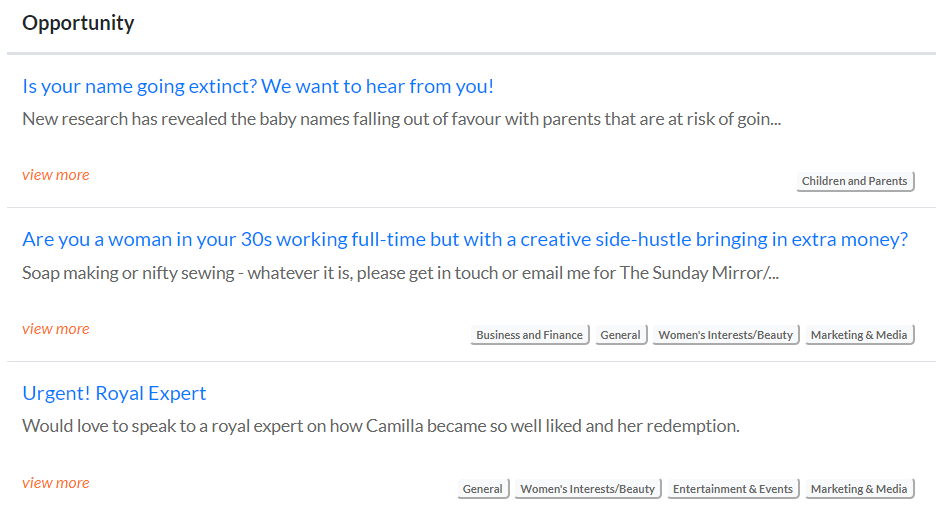
When you find an opportunity that looks relevant to you, you can simply click on it to expand and see the full details.
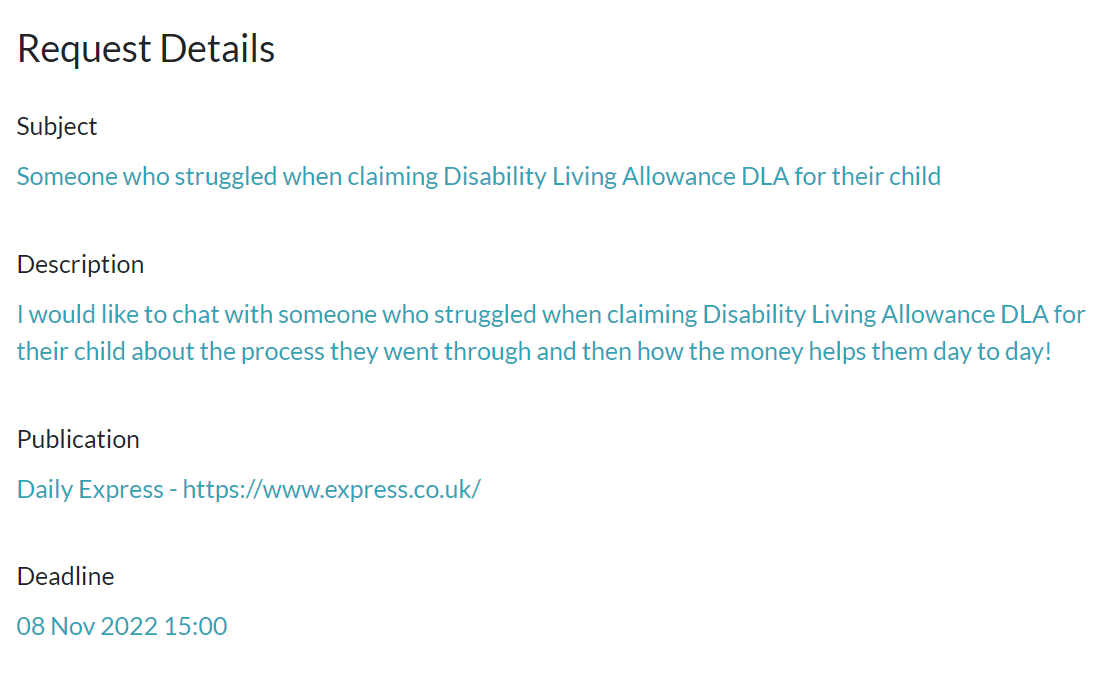
Pros
One of the great things about PressPlugs is that each request details the name of the journalist as well as their direct email. If you’re a PR pro, you can take this information and start building up a database that you can use to pitch relevant ideas and creative campaigns.
Cons
The number of emails you receive from PressPlugs is beyond excessive. You are likely to miss important emails if you keep these turned on. For me, I have to disable the email notifications (one email for every new query posted!) and work directly on the platform.
This platform is designed specifically for U.K. publications. So if you are a U.S. company, this platform may not offer as much value for you as some of the others.
Tips for success
I spoke with Tracy Nolan, co-founder at PressPlugs, to get her top tips for success when using the platform. She had this advice:
Always treat journalists with respect and only go after opportunities where you are a good match. Speculative long shots are not helpful and will mean the journalist will be more reluctant to look at future pitches. Always play the long game and be as helpful as you can.
Final thoughts
Unlike most link building tactics, HARO and other earned media platforms are excellent ways of generating high-quality backlinks and press mentions. Just keep in mind that they require a bit of patience, and you’ll need to provide high-quality responses to the inquiries.
Nevertheless, for the level of effort required compared to the potential gain, it’s definitely worth your time.
Got a favorite I didn’t mention? I want to know! Of course, if you have any questions, ping me on Twitter.



